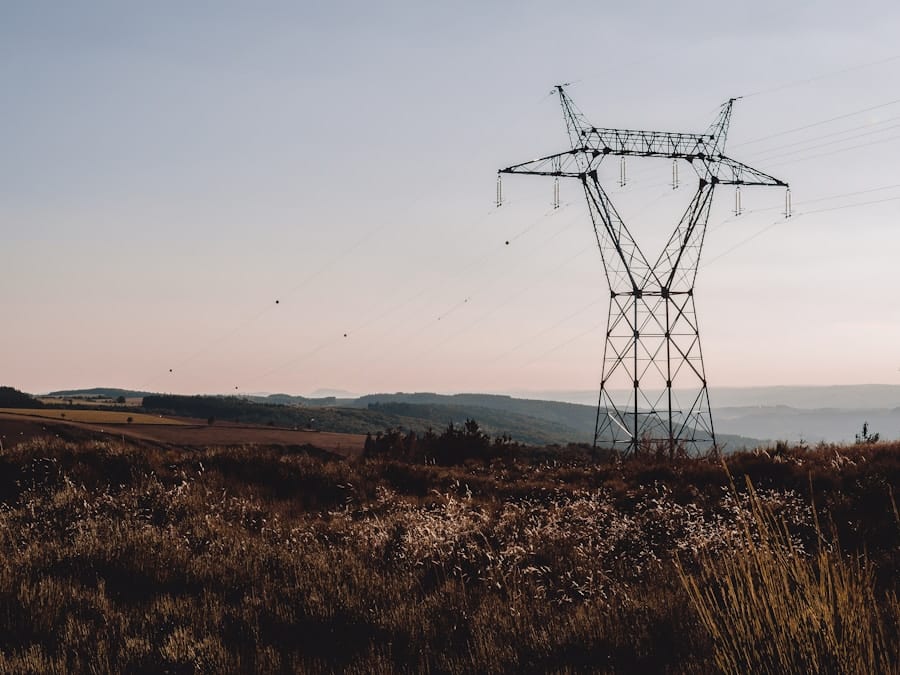The integration of artificial intelligence (AI) into energy grid optimization represents a transformative shift in how energy systems are managed and operated. As the global demand for energy continues to rise, coupled with the increasing complexity of energy sources and consumption patterns, traditional methods of grid management are becoming inadequate.
By leveraging vast amounts of data generated from various sources, AI can analyze patterns, predict outcomes, and optimize operations in real-time, leading to more effective energy distribution and consumption. The energy sector is undergoing a significant transition, driven by the need for decarbonization and the integration of renewable energy sources. This transition necessitates a more sophisticated approach to grid management, where AI plays a pivotal role.
From predictive maintenance to demand response strategies, AI technologies are being deployed to address the challenges posed by fluctuating energy demands and the intermittent nature of renewable energy sources. As we delve deeper into the various applications of AI in energy grid optimization, it becomes evident that these technologies are not merely enhancements but essential components for a sustainable energy future.
Key Takeaways
- AI plays a crucial role in optimizing energy grids by using advanced algorithms to improve efficiency and reliability.
- Predictive maintenance for energy grids is enhanced by AI, which can analyze data to identify potential issues before they occur.
- AI is utilized for demand response and load forecasting, allowing energy providers to better manage and allocate resources based on real-time data.
- The integration of renewable energy sources is made more efficient through AI applications that optimize their usage and integration into the grid.
- AI contributes to grid stability and resilience by continuously monitoring and adjusting energy flow to prevent disruptions and outages.
The Role of AI in Predictive Maintenance for Energy Grids
Limitations of Traditional Maintenance
Traditional maintenance practices often rely on scheduled inspections or reactive measures following equipment failures, which can lead to unplanned outages and costly repairs.
The Power of AI-Driven Predictive Maintenance
In contrast, AI-driven predictive maintenance utilizes machine learning algorithms to analyze historical data from sensors embedded in grid infrastructure. This analysis allows for the identification of patterns that precede equipment failures, enabling operators to perform maintenance proactively before issues escalate.
Real-World Impact and Benefits
A case study involving a major utility company demonstrated that implementing AI for predictive maintenance reduced unplanned outages by 30% and extended the lifespan of critical assets by 20%. This not only enhances reliability but also significantly lowers operational costs associated with emergency repairs and service interruptions.
Using AI for Demand Response and Load Forecasting

Demand response (DR) programs are essential for balancing supply and demand in energy grids, particularly as renewable energy sources become more prevalent. AI plays a crucial role in optimizing these programs by providing accurate load forecasting and enabling dynamic adjustments based on real-time data. By analyzing historical consumption patterns, weather data, and socio-economic factors, AI algorithms can predict future energy demand with remarkable accuracy.
For example, during peak demand periods, utilities can utilize AI to identify which customers are most likely to reduce their consumption in response to price signals or incentives. This targeted approach not only maximizes the effectiveness of demand response initiatives but also minimizes the need for costly peaking power plants. A notable implementation involved a regional grid operator that used AI-driven load forecasting to enhance its demand response program.
The result was a 15% reduction in peak load during summer months, demonstrating how AI can facilitate more efficient energy use while promoting consumer engagement.
AI Applications for Renewable Energy Integration
The integration of renewable energy sources such as solar and wind into existing energy grids presents unique challenges due to their variable nature. AI technologies are instrumental in addressing these challenges by optimizing the management of distributed energy resources (DERs). Machine learning algorithms can analyze weather forecasts, historical generation data, and grid conditions to predict renewable energy output accurately.
This predictive capability allows grid operators to make informed decisions about resource allocation and grid stability. One compelling example is the use of AI in managing solar farms. By employing advanced forecasting models that consider cloud cover and atmospheric conditions, operators can optimize the dispatch of energy generated from solar panels.
In a pilot project in California, an AI system was implemented to manage a large-scale solar installation. The system successfully predicted solar generation with an accuracy rate exceeding 90%, enabling better integration into the grid and reducing reliance on fossil fuel-based backup generation. Such applications not only enhance grid reliability but also contribute significantly to reducing greenhouse gas emissions.
AI’s Role in Grid Stability and Resilience
Grid stability is paramount for ensuring a reliable supply of electricity, especially as the energy landscape evolves with increased reliance on renewables. AI technologies contribute to grid stability by providing real-time monitoring and control capabilities that enhance resilience against disturbances such as outages or fluctuations in supply and demand. Through advanced analytics and machine learning, AI systems can detect anomalies in grid performance and initiate corrective actions before they escalate into larger issues.
For instance, AI can be employed to manage voltage levels across the grid dynamically. By analyzing data from smart meters and sensors, AI algorithms can identify areas experiencing voltage drops or surges and automatically adjust the flow of electricity to stabilize the system. A notable case involved a utility company that implemented an AI-driven voltage control system across its network.
The result was a significant reduction in voltage-related outages and improved overall grid performance. This proactive approach not only enhances reliability but also supports the integration of more renewable resources by ensuring that fluctuations do not compromise grid stability.
AI’s Impact on Energy Efficiency and Conservation

Optimizing Energy Consumption with AI
AI technologies are revolutionizing energy efficiency by analyzing consumption patterns at individual and aggregate levels. This enables the identification of opportunities for energy savings and promotes conservation behaviors among consumers. Smart home devices equipped with AI capabilities can learn user preferences and optimize energy use, leading to significant reductions in overall consumption.
Smart Thermostats: A Key to Energy Savings
Smart thermostats are a prime example of AI-driven energy efficiency. By utilizing machine learning algorithms, they analyze user behavior and environmental conditions to optimize heating and cooling schedules. A study by a leading energy research organization found that households using AI-driven smart thermostats reduced their energy consumption by an average of 20%.
Personalized Energy Efficiency Programs
Utilities are leveraging AI to develop personalized energy efficiency programs that target specific customer segments based on their usage patterns. By providing tailored recommendations for energy-saving measures, these programs enhance customer engagement and contribute to broader sustainability goals.
Challenges and Opportunities in AI-Driven Energy Grid Optimization
While the potential benefits of AI in energy grid optimization are substantial, several challenges must be addressed to fully realize these opportunities. One significant challenge is the need for high-quality data. Effective AI models rely on vast amounts of accurate and timely data from various sources within the grid ecosystem.
However, many utilities face difficulties in collecting and integrating this data due to legacy systems or inadequate infrastructure. Moreover, there are concerns regarding cybersecurity as increased connectivity through IoT devices introduces vulnerabilities that could be exploited by malicious actors. Ensuring robust security measures while maintaining operational efficiency is crucial for building trust in AI applications within the energy sector.
Despite these challenges, there are numerous opportunities for innovation and growth. The ongoing advancements in machine learning techniques and data analytics present avenues for developing more sophisticated models that can adapt to changing conditions within the grid. Additionally, collaboration between utilities, technology providers, and regulatory bodies can foster an environment conducive to experimentation and scaling successful AI initiatives.
The Future of AI in Sustainable Energy Grid Management
Looking ahead, the future of AI in sustainable energy grid management appears promising as technology continues to evolve rapidly. The increasing adoption of smart grids equipped with advanced sensors and communication technologies will provide a wealth of data that can be harnessed by AI systems for enhanced decision-making capabilities. As machine learning algorithms become more refined, their ability to predict outcomes and optimize operations will improve significantly.
Furthermore, as society moves toward greater electrification—particularly with electric vehicles (EVs) becoming mainstream—AI will play a crucial role in managing the additional load on grids while ensuring stability and efficiency. The integration of vehicle-to-grid (V2G) technologies will allow EVs to act as mobile energy storage units, providing flexibility to the grid when needed. In conclusion, as we navigate the complexities of modern energy systems, the role of AI will be central to achieving a sustainable future.
By optimizing operations across various dimensions—from predictive maintenance to renewable integration—AI has the potential to revolutionize how we manage our energy resources effectively while minimizing environmental impact. The journey toward smarter grids is just beginning, but with continued investment in technology and innovation, we can look forward to a more resilient and efficient energy landscape.
A related article to “How AI Is Supporting Energy Grid Optimization for Sustainability” can be found on com
This article discusses how smartwatches are enhancing connectivity in our daily lives. Just like AI is revolutionizing energy grid optimization, smartwatches are changing the way we interact with technology and stay connected on the go. Both technologies are examples of how innovation is shaping a more sustainable and efficient future.
FAQs
What is AI?
AI, or artificial intelligence, refers to the simulation of human intelligence in machines that are programmed to think and act like humans. This includes tasks such as learning, problem-solving, and decision-making.
How is AI supporting energy grid optimization?
AI is being used to optimize energy grids by analyzing large amounts of data to identify patterns and trends, predict energy demand, and optimize energy distribution. This helps to improve the efficiency and sustainability of energy grids.
What are the benefits of using AI for energy grid optimization?
Using AI for energy grid optimization can lead to reduced energy waste, lower operational costs, improved reliability, and increased use of renewable energy sources. This ultimately contributes to a more sustainable energy system.
How does AI help in achieving sustainability in energy grid optimization?
AI helps in achieving sustainability in energy grid optimization by enabling better management of energy resources, reducing carbon emissions, and supporting the integration of renewable energy sources into the grid.
What are some examples of AI applications in energy grid optimization?
Some examples of AI applications in energy grid optimization include predictive maintenance of grid infrastructure, real-time energy demand forecasting, and autonomous energy management systems. These applications help to improve the overall performance and sustainability of energy grids.

